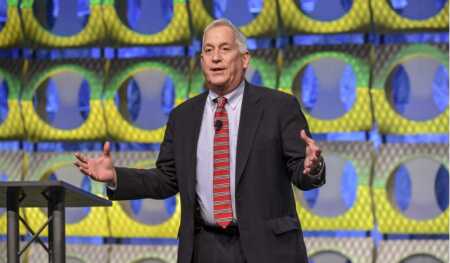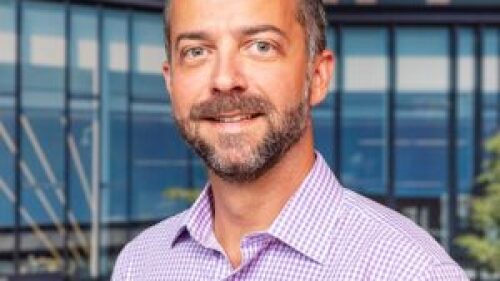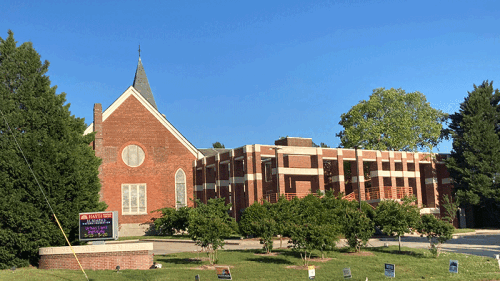In an address that concluded this year’s ULI Fall Meeting in New York City, author and journalist Walter Isaacson extolled the importance of the urban built space in fostering creativity and technological progress.
“Cities are having a renaissance because of the digital revolution,” explained Isaacson, whose latest book, The Innovators, is a study of visionary scientists, mathematicians and engineers whose work over the previous two centuries led to the rise of digital computing and the Internet.
He countered the 21st-century meme of a knowledge economy in which people in far-flung places interact mostly in virtual spaces. “Creative people like to gather together,” he said. “The digital revolution didn’t pull us apart, it connected us. Creative people want to live when they can rub elbows, not just Skype each other.”
Isaacson is best known for his bestselling 2011 biography of Apple co-founder Steve Jobs, and for biographies of Albert Einstein and Benjamin Franklin. He also is a former journalist who served as editor of Time magazine and chairman and chief executive of CNN. He currently is the president and chief executive of the Aspen Institute, a nonpartisan educational and policy studies institute. The 62-year-old New Orleans native was honored this year by the National Endowment for the Arts, which selected him as its Jefferson lecturer.
Though his previous book on Jobs focused upon how the disruptive influence of a single-minded visionary led to innovations such as the iPhone, Isaacson’s new book gives more due to the team efforts that actually created game-changing technologies, and the role of cultural ecosystems in providing the conditions that fostered progress. Urban areas, he said, are ideally suited to be such ecosystems, because of the diversity of people with complementary skills, ideas and ambitions that they bring together in the same space.
As a biographer, Isaacson said he’s learned that there is no single formula for innovation. “It’s a life story, not one recipe,” he explained. “Different people do it different ways.” He said that “the diversity in the way of living, of thinking about things” is an essential catalyst for breakthroughs.
Isaacson cited the example of Ada Lovelace, the 19th century mathematician, whose vision for a multi-function calculating machine, which would work with artistic and intellectual information as well as solve mathematical problems, presaged the age of computers and the Internet. Lovelace, the daughter of the poet Lord Byron, originally got her inspiration when she visited English cities and saw mechanical looms that used punch cards to direct the weaving patterns.
Lovelace, he said, exemplified the notion of an “intimate connection” between technology and the humanities that is too often overlooked today.
“Steve Jobs said that if you can stand at the intersection of art and technology, you’ll do great things,” Isaacson explained. “Where does that happen? It happens in cities.”
Isaacson said that architects, developers and planners can play an important role in fostering technological progress, by conceiving, designing and building spaces in cities that foster collaboration and interaction. “People want to get together in cool spaces and cool cities,” he said.
Isaacson’s Aspen Institute is seeking to be a catalyst in that synthesis. Its 2013 CityLab summit brought together 300 global city leaders—more than 25 mayors, plus urban theorists, city planners, scholars, architects, and artists—for a series of conversations about urban ideas that are shaping the world’s metro centers.
Isaacson said that he also hopes to see the creation of more co-working incubator buildings in cities, akin to New Orleans’ Propeller Incubator, which provides both working and conference space for entrepreneurs, small business owners, freelancers, non-profits, and foundations. At a larger enterprise level, he urged major companies to locate their headquarters operations in cities, rather than isolating them in far-flung suburban corporate campuses.
He noted that even in northern California’s iconic Silicon Valley, there’s been a gradual migration of talent and enterprises back into San Francisco. “I get amused by gentrification debates,” he said, citing some San Francisco residents’ complaints that the influx of Google employees is driving living costs and overcrowding even higher. “There’s one obvious thing. Creative people are more likely to want to live in San Francisco than they are in Mountain View.”
Isaacson also said he was encouraged by the resurgence of small and medium-sized cities as hotbeds for what urban studies theorist Richard Florida has dubbed “the creative class.”
Isaacson predicted that the next wave of technological innovation may occur in some of those places, as the synergy of artistic creativity and engineering will expand to include the life sciences, such as medical and genetic research.
Isaacson said that breaking down silos of influence and knowledge that separate different professions is critical for innovation. Sometimes the best approach, he said, is to build an entirely new building for that collaboration. “Put things that cross over on a new piece of property,” he recommended. “
But again, he felt that could best be accomplished in structures that are woven into the creative fabric of an urban area.
Isaacson also opined that the freewheeling, open-data American business culture will continue to lead the world in innovation, in part because compared to nations such as China, it has a far higher tolerance for dissent and risk-taking that is necessary for breakthroughs. In the U.S., he said, there is not only freedom of information flow, but freedom to fail. “We have venture capital that’ll back you even if you fail a couple of times,” he said.






